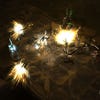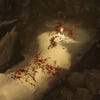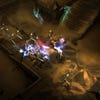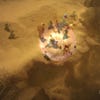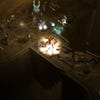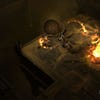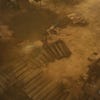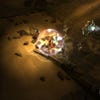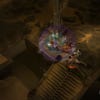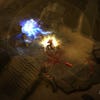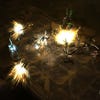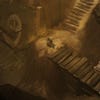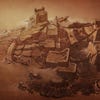Designing Diablo III
Game Director Jay Wilson picks apart what he's putting together.
On the Gamescom 2010 show floor, Blizzard's imposing stand featured a huge enclosure. Its black walls, printed with glowering artwork, enclosed dozens and dozens of PCs hosting a playable demo of Diablo III.
This demo was a whole year old, having debuted at BlizzCon 2009. Despite that - and despite the fact this room was closed to the general public, with press and other privileged badge-holders being waved through by ever-vigilant staff - it was constantly busy, usually with a queue waiting for an open slot. That's how badly the world wants a taste of Diablo III.
At the other end of the vast Koelnmesse complex, in another, much smaller, but still brand-black room, sits Game Director Jay Wilson. It's end of a long, noisy day, and he's looking understandably tired. Wilson is a relatively easy man to perk up, though; you just need talk to him about game design. So I do.
A lot of it was looking at systems that existed in Diablo II, and ways that we could expand. There were a lot of systems in Diablo II that were good systems, but maybe weren't used well or weren't recognised as good systems.
Gambling worked pretty well if you knew it worked, but a lot of people didn't, and rune words were cool, but any system that requires you to go to a website to know what to do seems like a bad system.
So we looked at things like that and said, you know, what we really want is a one-stop shop for everything to do with creating and customising items. One place where we can reliably put features and players understand where to go, who does it, and also get introduced to it in such a way that we can lead it earlier in the game, so that players understand what it's good for.
And they focus on the item game, which is really what the game's all about.
Yeah, those are the three artisans. They each craft items depending on their specialities: so the jeweller does rings and amulets, the mystic, staves and wands.
They each have unique abilities they can do: you've seen the blacksmith's, the mystic can do enchantments and divinification [equivalent to using a scroll of identification on an item] and the jeweller can de-socket gems and also combine gems to make higher-quality gems.
Yes - the tooltips are the limit! Once we run out of space in those... And we fill them up quite a bit. So yeah, that's the big thing, because we really wanted to make a lot of those elements more prolific.
The thing about getting an item is, it's so exciting when you get one - but if that's it, if that's the end of the story, then that's kind of the end of the excitement. But if you have all these things you can do to it - you can go and get an enchantment and you can go and get sockets added to it and you can go and find really good gems to put into it - well, that just extends the excitement of getting an item.
We really liked that notion because it's what the game's all about.
That's right. They stay in whatever passes for town, wherever you go, so they don't go out into the combat world with you, but yeah, as you progress through the story, they follow you.
You get basically a whole entourage of quest givers and artisans who go with you. We wanted more of a feel that the player is a hero - and people gravitate around heroes, they believe in them, they want to help them, they want to be around them.
So we wanted that notion that as the player moves through the game, they just collect all these people who are like a support network, but also are there to bask in the aura of this really good, heroic character.
Most of the feedback we've got from the actual game we got from the beta. So there haven't been any big surprises yet, but it's still kind of early. The interesting thing will be to see how people end up using Battle.net, how the structure and their play sessions are, and also how they interact with achievements in a game like that.
Achievements can have a huge impact in terms of motivating a player, and we always want it to be a positive one, but sometimes it can motivate behaviour that is not inherently fun and we don't like to encourage.
It may be that those players don't mind it, but when it gets right down to it, if somebody feels like they've got to do something kind of repetitive and boring to get an achievement or some kind of reward, then we've clearly designed the game wrong.
I think good achievement design is actually some of the hardest design. They shouldn't be, but they're so powerful, and you can really send the player down a bad path.
I'd rather use achievements to say that there's things that we know are fun that players won't ever try. Some players will, but not all players will, and we can really point out these fun things to do. Because of that, I think achievements are a really exciting and powerful feature.



